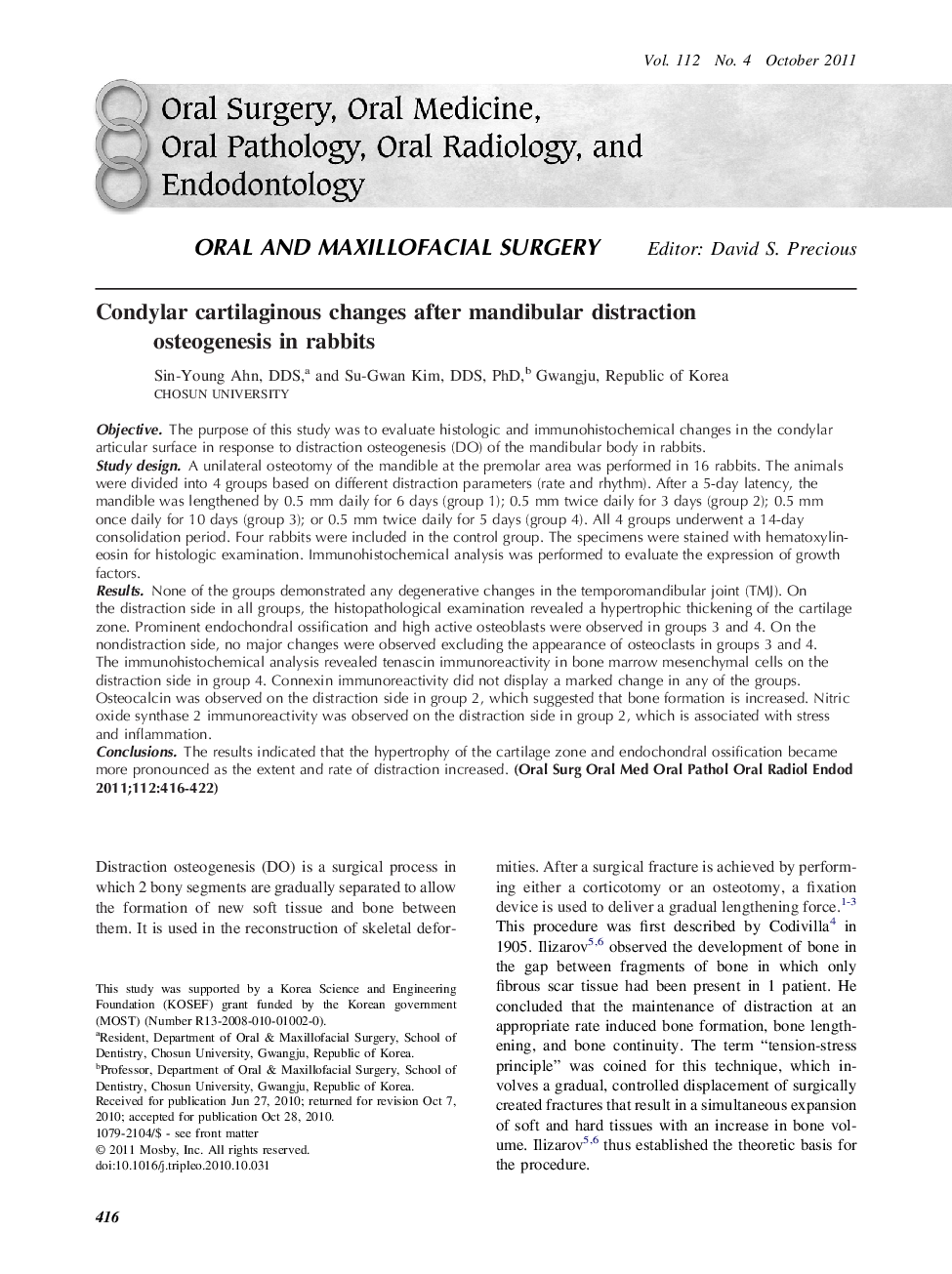| Article ID | Journal | Published Year | Pages | File Type |
|---|---|---|---|---|
| 6059652 | Oral Surgery, Oral Medicine, Oral Pathology, Oral Radiology, and Endodontology | 2011 | 7 Pages |
ObjectiveThe purpose of this study was to evaluate histologic and immunohistochemical changes in the condylar articular surface in response to distraction osteogenesis (DO) of the mandibular body in rabbits.Study designA unilateral osteotomy of the mandible at the premolar area was performed in 16 rabbits. The animals were divided into 4 groups based on different distraction parameters (rate and rhythm). After a 5-day latency, the mandible was lengthened by 0.5 mm daily for 6 days (group 1); 0.5 mm twice daily for 3 days (group 2); 0.5 mm once daily for 10 days (group 3); or 0.5 mm twice daily for 5 days (group 4). All 4 groups underwent a 14-day consolidation period. Four rabbits were included in the control group. The specimens were stained with hematoxylin-eosin for histologic examination. Immunohistochemical analysis was performed to evaluate the expression of growth factors.ResultsNone of the groups demonstrated any degenerative changes in the temporomandibular joint (TMJ). On the distraction side in all groups, the histopathological examination revealed a hypertrophic thickening of the cartilage zone. Prominent endochondral ossification and high active osteoblasts were observed in groups 3 and 4. On the nondistraction side, no major changes were observed excluding the appearance of osteoclasts in groups 3 and 4. The immunohistochemical analysis revealed tenascin immunoreactivity in bone marrow mesenchymal cells on the distraction side in group 4. Connexin immunoreactivity did not display a marked change in any of the groups. Osteocalcin was observed on the distraction side in group 2, which suggested that bone formation is increased. Nitric oxide synthase 2 immunoreactivity was observed on the distraction side in group 2, which is associated with stress and inflammation.ConclusionsThe results indicated that the hypertrophy of the cartilage zone and endochondral ossification became more pronounced as the extent and rate of distraction increased.
